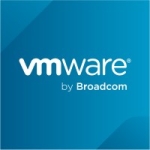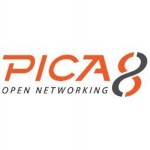What is our primary use case?
Cisco ACI is used in the data center ecosystem. It's an eco-space solution. It's a DMB solution where you have the big hybrid data center you want to deploy on-premises, so the goal is to integrate all the virtual environments on feature environment servers with the data center.
What is most valuable?
What's most valuable in Cisco ACI is that it isn't like the legacy infrastructure where you have a lot of complexity in a TTR architecture.
What I like most about Cisco ACI is that you can control those devices from a single console, even if you have three hundred devices. You can manage the entire infrastructure from a single point of contact, so Cisco ACI is a time saver.
Another exclusive feature of Cisco ACI is its API interface that lets you enhance automation within the environment.
You can manage your entire data center from a single interface through Cisco ACI. If you want to upgrade three hundred devices in one click, you can do that, and within one hour, all three hundred devices will be upgraded.
I also like that Cisco keeps enhancing the product by adding different features, so there have been five major releases of Cisco ACI.
Another valuable feature of the solution is that it's more user-friendly than Aruba and Juniper.
What needs improvement?
An area for improvement in Cisco ACI is security, which Cisco needs to enhance in the solution. Though Cisco ACI uses a whitelist model, you must purchase an external product, such as a security firewall solution, to make whitelisting work, which the customer could find expensive.
For example, you're a customer who has Cisco ACI, and the solution doesn't have IP-based filtering, so as a customer, you've purchased Cisco ACI. However, you still need to buy another product for security, and some customers wouldn't like that. However, some customers prefer to go with Cisco ACI because of its scalability and flexibility versus other solutions such as Juniper and Aruba.
Technical support for Cisco ACI also needs improvement, particularly in product knowledge.
An additional feature I'd like to see in the next release of Cisco ACI is segment routing. For example, if you have an MPLS network, you can't directly integrate it with Cisco ACI at the moment. Suppose you have multiple data centers you want to connect to the MPLS private link through your service provider. In that case, you can't directly integrate that with Cisco ACI without an external device, which doesn't make sense to the customer. Cisco recently introduced the MPLS feature in Cisco ACI, but it's not up to the mark.
For how long have I used the solution?
We've been involved with Cisco ACI since 2015, and have deployed the solution for more than thirty projects.
What do I think about the stability of the solution?
Cisco ACI used to be unstable, but after version 4.2, it's been very stable in the production environment.
What do I think about the scalability of the solution?
Scalability-wise, Cisco ACI is a good solution because you can have more than five thousand servers in one ACI fabric. There's a lot of flexibility and scalability in Cisco ACI because you can even seamlessly integrate it with legacy infrastructure despite having a different data center.
How are customer service and support?
Cisco support used to be good, but over time, many newbies were hired to provide technical support for Cisco ACI and other Cisco products, so the quality has decreased. The support provided before 2018 was good, but now, the Cisco technical support team has been struggling to give good support or provide expertise in some areas.
For example, if you raise an issue, you have to ask multiple engineers and make numerous escalations. Cisco ACI is a good product, but the support quality nowadays isn't up to the mark.
Cisco requires the customer to have some experience with the product before deployment, but novice technical support is brought in without sufficient training or without training the newbies for at least six months. The technical support team seems to just select cases and works on those without enough knowledge, so the customer experience is bad.
On a scale of one to five, I'm rating Cisco support a three.
Which solution did I use previously and why did I switch?
Some customers used Juniper and Aruba but went with Cisco ACI because the other two solutions weren't as user-friendly.
How was the initial setup?
Anyone setting up Cisco ACI for the first time will see that it requires a lot of resources. Still, even if the initial setup is complicated, you can refer to the Cisco website regarding the steps you need to perform to complete the setup. Cisco explained the process well, and you can even take a workshop on it.
From a configuration point of view, I found Cisco ACI complex because it isn't easy to create the policy. Unless you have a good networking background, you won't be able to set up Cisco ACI easily.
For example, if your organization doesn't have experienced engineers, Cisco provides a two-day workshop for your engineers. Cisco also offers many free tools in the market to help you set up your account.
On a scale of one to five, I'm rating the initial setup for Cisco ACI as four.
What's my experience with pricing, setup cost, and licensing?
Pricing for Cisco ACI could be expensive if you're not a gold partner. If you're a gold partner, you'll get reasonable pricing, but to become a gold partner, you must cross several layers. For example, at least twenty engineers within your organization have to be certified, with each certification priced at £2,000 minimum, so this would make some companies think twice about the product. If you're going for Aruba and Juniper products, on the other hand, you can quickly get the partner status, and you can start selling the product.
As a gold partner, you can get up to seventy percent discount on Cisco ACI, for example, while an ordinary partner gets ten percent off.
Cisco ACI is expensive for both customers and partners, but I'm rating pricing for the product as four out of five because even if the price is costly, you get a lot of benefits from the product.
Cisco ACI isn't the best, price-wise, but it's still a good solution. If you're in a small organization, you may be unable to afford it. Cisco ACI is best for enterprises but not SMBs because Cisco ACI and its required resources are expensive.
Which other solutions did I evaluate?
I've evaluated VMware NSX, but it can't compete with Cisco ACI. Cisco ACI is a hardware-level product that can support terabytes and petabytes of data at the same time, which VMware NSX can't do because it's a virtual environment with limited throughput and scalability.
If you're planning to apply terabytes of traffic in VMware NSX, you'll find it hard, and the solution will eventually choke after some time.
Cisco ACI has the best scalability. Cisco also has categories where particular hardware will be recommended based on your requirement, for example, whether you have petabytes or terabytes of data.
What other advice do I have?
My company is mainly involved with three products, Cisco ACI, Cisco FTD, and Cisco WebDialer.
My company is a reseller/integrator for Cisco ACI.
I'd rate Cisco ACI as nine out of ten.
Disclosure: My company does not have a business relationship with this vendor other than being a customer.
















